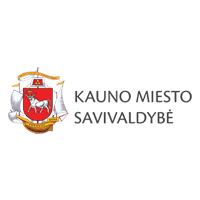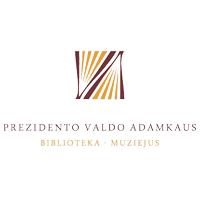Back in the times of the national revival in the second half of the 19th century, the intellectual leaders of the Nation realized that the state is being formed not only by the definition of its territory and governmental institutions but also by taking into consideration the cultural, social and political obligations of its citizens. Upon becoming a modern national state, the Republic of Lithuania was impossible to imagine without the respect of its citizens to the history and culture. State festivals and patriotic campaigns also served for the development of respect. By giving priority to certain events and anniversaries of significance to the nation, the representatives of the elite of the State played with these days in the calendar of State festivals like with a deck of card in Solitaire. Philosophers also came to the assistance to the players of political Solitaire by emphasizing that patriotism is closely related with emotions which – as the sensual experience of Homeland and Nation – could be incited by patriotic ethnically-focused education and national festivals. The State had to take care of both elements of the issue.
After regaining the Independence in 1918, one of the most important objectives of Lithuania was the involvement of the entire nation – which had been exhausted and dispersed during the Great War – for the joint creation of a united State. This required employing a variety of means which had to convert the concept of the State into a pleasant and tangible form. Events of national festivals and other patriotic campaigns promoted the feeling of the population that they are the real participants of the history of Lithuania. The festivals were impressively celebrated both in the provisional capital and in the periphery. The extent of the festivities is witnessed by the crowds of participants observed in photos, the sheer number of flags carried during the festivals, the presidents giving passionate speeches from the tribunes, members of the Government and Seimas (the Parliament) and the spiritual strength of the military parades. The work of festival organization involved thousands of pedagogues and members of nongovernmental organizations. The society had the right to suggest ideas for the program of a festival and the citizens were really proactive with their contributions. Ethnic minorities, high school pupils, students, representatives of the military, the intellectual leaders, the Catholic Church and many other groups of the society got involved into this process. By building fortresses of patriotism in the hearts of its citizens, the interwar Lithuania fortified itself from inside.
The festivals of the State and the Nation served for the spread of the patriotic propaganda. During such events, monuments were unveiled, institutions were opened, speeches were given, and the created sensation allowed the ruling elite to create the desired interpretations of the cultural and historic memory. Festivals were being laid out like cards in the game of Solitaire by considering the politics of the interior and the international situation, the political and ideological attitudes of the governing elite, the greatest achievements of the state and the most cherished ambitions. This exhibition strives to reveal the priorities the State and the governing individuals as well as the way of the perception of these priorities. The intention of this exhibition is to give some explanations of the motifs of this jigsaw and the ways of combining single stones into a mosaic.
Hall One introduces the calendar of the holidays and days-off in the interwar Lithuania and the alterations taking place in this calendar. There always was the single most important festival during the year; however, its date was bound to change from February 16 (Day of the Independence of Lithuania) to May 15 (Day of the Convention of the Constitutional Assembly) to September 8 (Day of the Nation). In this hall, You will find out what the rituals of the festivals inscribed into the calendar were and what alterations they underwent. The deck of the festivity cards were also supplemented by the commemorations of national importance which were held on January 15 to remember the day of the reincorporation of Klaipėda Region into the territory of the ‘Greater’ Republic of Lithuania and October 9, the day of Vilnius Mourning. Even though the two days were not inscribed into the list of the holidays and days-off, they became cornerstones of the national ideology nevertheless – as shown in the exposition of Hall Two. The strengthening authoritarian government in the early 1930s determined that the 60-year anniversary of President Antanas Smetona was celebrated in an extremely (and extravagantly) solemn way. The events of the presidential anniversary are introduced in Hall Three of the exhibition. Since 1930, the whole energy of the most important annual national festival was released on September 8, on the day of the scheduled coronation of medieval Grand Duke of Lithuania Vytautas the Great. The success story of the year-long celebration of the 500-year anniversary since the death of Vytautas the Great is shown to the visitor in Hall Four. There, the Dear Visitor will find out how to raise a million Litas and will hopefully grab the chance of traveling around Lithuania with Vytautas the Great.
The organizers also hope that this exhibition will help the visitor understand that festivals require not only participation but also contribution to their organization in the city or community environment and also when being together with congenial souls. The title ‘State festival’ may impose a certain barrier and the sense of the regulation (or, actually, manipulation) from above; however, the emotions of the participants witnessed in the photo materials and the video footage evidently demonstrate that even official commemorations may truly unite people, unleash their creativity, foster their interest in the history of the nation, make this interest more profound and find pride in representing one’s Homeland.



















